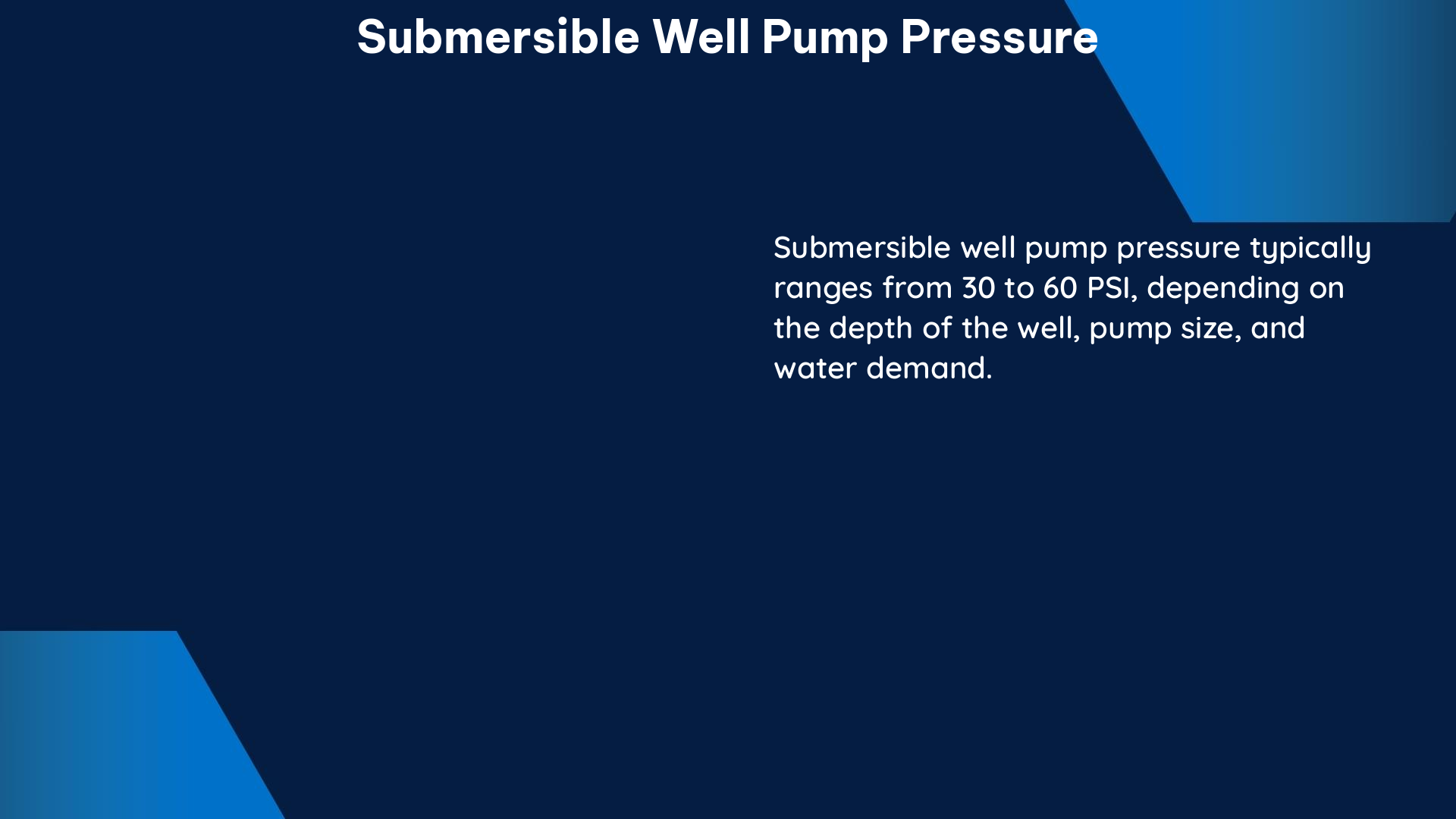Submersible well pumps are designed to operate underwater, typically in a well casing, and are used to extract water from underground sources. The pressure generated by a submersible well pump is a critical factor in its performance and is determined by several variables, including the pump’s horsepower, the depth of the well, the static water level, and the recovery rate of the well.
Understanding Submersible Well Pump Horsepower
The horsepower of a submersible well pump is a measure of its power output and is usually indicated on the control box or start box. This information is essential in determining the pump’s capacity to lift water to the surface against the force of gravity and friction loss in the system.
- Submersible well pumps can range from a fraction of a horsepower (e.g., 0.5 HP) to several horsepower (e.g., 5 HP or more), depending on the pump’s capacity and the demands of the system.
- The horsepower of the pump should be selected based on the depth of the well, the static water level, the recovery rate of the well, and the expected water usage.
- Oversizing the pump can lead to excessive energy consumption and wear, while undersizing the pump can result in insufficient water flow and pressure.
Measuring Well Depth and Static Water Level

The depth of the well and the static water level are also crucial factors in determining the pump’s performance. The static water level is the depth of the water in the well when the pump is off long enough for the aquifer to return to its normal level.
- The total dynamic head of a submersible well pump is the vertical distance between the pump and the water level in the well, plus the friction loss in the system.
- The total dynamic head can range from a few feet to several hundred feet, depending on the depth of the well and the friction loss in the system.
- Measuring the static water level is important in determining the pump’s total dynamic head, which is essential for selecting the appropriate pump and ensuring its efficient operation.
Understanding Well Recovery Rate
The recovery rate of the well is a measure of the well’s ability to replenish the water supply after it has been pumped. This information is important in determining the pump’s capacity to meet the demand for water over time.
- The recovery rate of a well can range from a few gallons per minute (GPM) to several hundred GPM, depending on the size and characteristics of the well.
- A well with a low recovery rate may not be able to keep up with the water demand, leading to a drop in water pressure or even the pump running dry.
- Monitoring the well’s recovery rate can help identify potential issues with the well or the pump, and inform decisions about pump selection and water usage.
Measuring Submersible Pump Pressure
Submersible pressure transducers are often used to measure the pressure of the column of water above them in the well and send information to above-ground data loggers. These devices continuously record water levels and can provide valuable data on the performance of the well and the pump.
- The pressure generated by a submersible well pump can range from a few pounds per square inch (psi) to several hundred psi, depending on the pump’s capacity and the demands of the system.
- Monitoring the pump’s pressure can help identify issues such as a clogged well screen, a malfunctioning pump, or a drop in the water table.
- Pressure data can also be used to optimize the pump’s performance and energy efficiency, as well as to detect any changes in the well’s characteristics over time.
Conclusion
Submersible well pump pressure is a critical factor in the performance of these pumps, and is determined by several variables, including the pump’s horsepower, the depth of the well, the static water level, and the recovery rate of the well. Measurable, quantifiable data on these factors can provide valuable insights into the performance of the well and the pump, and can help to identify potential issues before they become serious problems.
References:
- Measuring Water Levels in Wells, Washington State Department of Health, 2024-02-13, https://doh.wa.gov/sites/default/files/legacy/Documents/Pubs/331-428.pdf
- What Pump is in my Well? – YouTube, 2018-11-20, https://www.youtube.com/watch?v=cWksNcUqWdE
- USE OF SUBMERSIBLE PRESSURE TRANSDUCERS IN WATER RESOURCE INVESTIGATIONS, U.S. Geological Survey, https://pubs.usgs.gov/twri/twri8a3/

The lambdageeks.com Core SME Team is a group of experienced subject matter experts from diverse scientific and technical fields including Physics, Chemistry, Technology,Electronics & Electrical Engineering, Automotive, Mechanical Engineering. Our team collaborates to create high-quality, well-researched articles on a wide range of science and technology topics for the lambdageeks.com website.
All Our Senior SME are having more than 7 Years of experience in the respective fields . They are either Working Industry Professionals or assocaited With different Universities. Refer Our Authors Page to get to know About our Core SMEs.